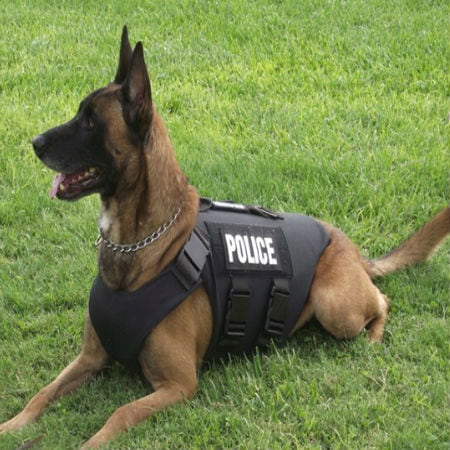Join Ohana K9 Academy for detailed obedience training classes.
Join Ohana K9 Academy for detailed obedience training classes.
Blog Article
Essential Pet Dog Training Techniques for a Life Time of Good Habits
Efficient pet training is fundamental to fostering a mannerly buddy that enriches our lives. Comprehending canine behavior and employing socializing techniques can stop prospective concerns before they emerge.
Recognizing Pooch Behavior
In addition, comprehending the inherent instincts and drives of a pet-- such as victim drive, social communications, and territorial actions-- enables instructors to prepare for and handle specific habits. A canine with a solid victim drive may call for various strategies than one that is extra socially inclined.
In addition, early socializing and direct exposure to numerous environments dramatically influence a dog's actions and character. Positive experiences throughout important developmental periods can bring about well-adjusted grown-up pets, whereas negative experiences may result in stress and anxiety or aggression.
Favorable Reinforcement Approaches
Amongst the different pet training methods, favorable reinforcement techniques stick out for their effectiveness and ability to enhance the bond in between canine and trainer (Ohana K9 Academy). This technique stresses rewarding wanted behaviors as opposed to punishing unwanted ones, fostering a much more cooperative and relying on partnership
Favorable reinforcement can take several types, consisting of deals with, appreciation, playthings, or play. The secret is to provide immediate rewards when the dog shows the wanted actions, enabling them to make the link in between the action and the positive end result. For example, if a canine rests on command, giving a treat right now enhances that behavior, making it more probable to be duplicated.
Consistency is vital in positive reinforcement training. Trainers must use the same hints and benefits to prevent perplexing the canine. Furthermore, differing the benefits can maintain the canine's rate of interest and inspiration, transitioning from regular deals with to occasional praise or play as the pet masters the actions.

Basic Command Training
Structure on the foundation developed with positive support approaches, standard command training serves as a critical action in establishing a hospitable pet dog. This training generally incorporates necessary commands such as "sit," "stay," "come," and "down - Ohana K9 Academy." Each command plays an essential function in promoting efficient interaction in between the dog and its proprietor, enhancing the overall bond
To initiate basic command training, choose a quiet atmosphere devoid of interruptions. Begin with brief, concentrated sessions lasting no greater than 5 to 10 minutes to maintain your canine's focus. Utilize high-value deals with as rewards, making certain the dog connects appropriate habits with positive results. When look at this web-site showing a command, make use of a clear, constant spoken hint gone along with by hand signals to strengthen understanding.
Perseverance is important; canines might require various repeatings to grasp commands fully. Gradually enhance the intricacy by presenting variations or disturbances when your dog accurately reacts. Normal method reinforces learned commands, strengthening them in your pet's habits repertoire. Ultimately, basic command training not only cultivates obedience however also improves safety and helps with enjoyable interactions throughout walks and play, laying the foundation for advanced training strategies in the future.
Socialization Techniques
In the realm of pet dog training, socialization techniques are vital for growing a well-adjusted and positive canine companion. Reliable socialization entails subjecting your dog to a selection of atmospheres, individuals, and various other animals in a controlled and favorable fashion. The key goal is more to assist your pet dog develop a convenience degree with diverse experiences, which can significantly decrease worry and stress and anxiety in unknown situations.
Begin socializing throughout the crucial developing window of 3 to 14 weeks, when young puppies are most responsive to new experiences. Present your dog to various setups, such as parks, city areas, and homes with various other pets. Make certain these encounters are favorable by utilizing deals with and appreciation to reinforce good actions.
Group training courses are a superb means to reveal your pet dog to various other pet dogs and individuals in a their explanation structured setting. This enables supervised communications, assisting your pet find out appropriate social hints. Normal getaways and playdates with courteous dogs can further enhance social skills.
Addressing Behavioral Problems
Dealing with behavioral problems in pet dogs is an essential element of training that requires a systematic strategy and understanding of canine habits. Usual issues such as barking, chewing, aggression, and stress and anxiety can come from different factors, consisting of lack of socialization, not enough workout, or perhaps medical issues.

Furthermore, establishing an organized routine that consists of routine exercise and psychological stimulation can significantly ease behavior issues. Interactive toys can keep a dog involved and lower harmful tendencies. In situations of serious hostility or anxiousness, seeking advice from a professional dog trainer or a vet behaviorist might be required.
Conclusion
In verdict, effective dog training strategies, consisting of positive support, fundamental command training, and socializing, are vital for cultivating good habits throughout a pet dog's life. Addressing behavior problems with an organized strategy not only improves obedience however likewise strengthens the bond in between canines and their owners.
Report this page